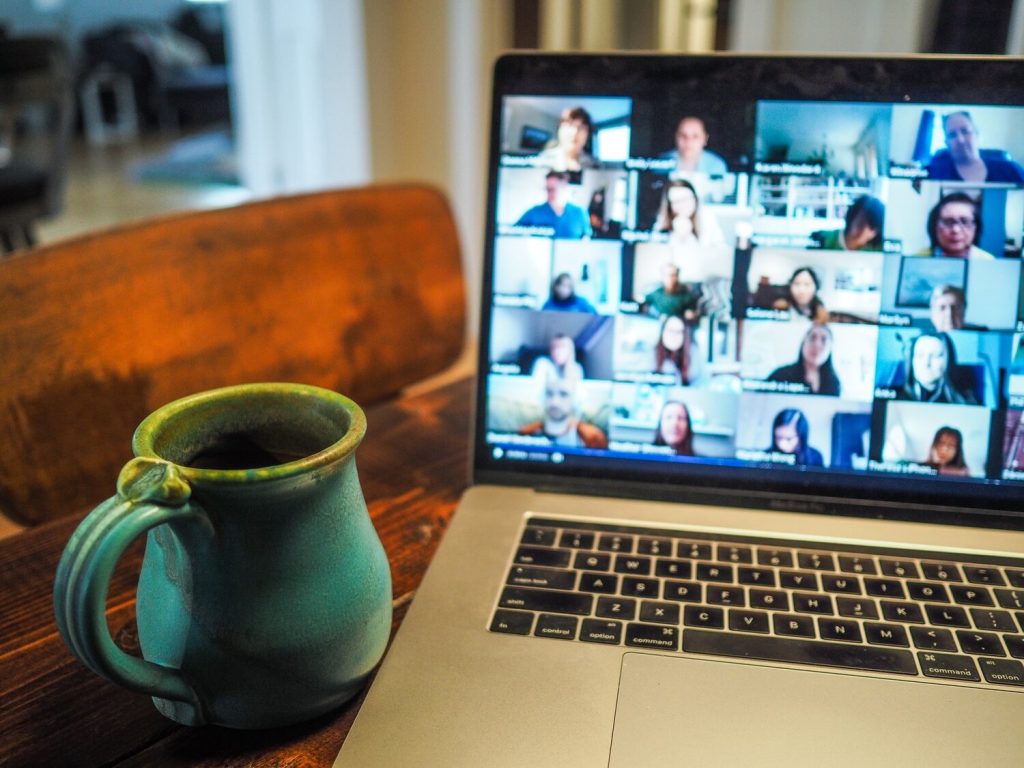Introduction to Telesimulation
The rise of technology and the growing use of virtual interaction in our culture has opened up a new frontier of education with telesimulation. Traditionally, both the teacher and student need to be physically present in the same place—a problem to which telesimulation has offered a unique solution. The field of healthcare, in particular, has embraced this technology with open arms, using it in an assortment of creative ways to improve everything from student training to patient care.

What is Telesimulation?
In a hands-on profession, one can only learn so much from reading and observing; eventually, the student must perform the various techniques and procedures for the first time. It requires doing. Doing requires preparation, practice an and presence.
The leap from books to bedside presents a problematic (and risky) transition from learning to practicing. Simulation offers a unique solution to this challenge. It provides students an opportunity to gain near real-life experience in a controlled and safe environment where mistakes do not harm patients.
Telesimulation takes this concept a step further, allowing the student to partake in this practice virtually from practically any location. Telesimulation is a novel form of learning that combines telecommunication resources with simulation resources, allowing students to participate in medical simulation exercises from remote geographic areas. During telesimulation, an instructor is present to guide students and provide real-time feedback.

Where is Telesimulation Being Used?
The popularity of telesimulation is rapidly increasing as many are starting to see this powerful technology’s potential. Telesimulation has been widely incorporated into the academic world, providing a new and immersive way to participate in learning activities from afar. With the development of the COVID-19 pandemic, various telesimulation services have risen to the occasion to help the education process stay on track. Telesimulation is also finding a home among professionals, particularly in the healthcare field. This technology is finding a use for nearly everything from live-stream surgical consultations to providing long-distance healthcare training in hard to reach locations.
Is Telesimulation Even a Feasible and Effective Teaching Method?
Despite its enticing concept, this new teaching method’s feasibility and effectiveness still needed to be assessed. Thankfully, several studies have examined this very question.
University of California – Irvine Medical Simulation Center
A 2019 study conducted by the Irvine Medical Simulation Center aimed to assess whether telesimulation technology was a feasible and effective way to teach an Emergency Medical Services (EMS) course on Mass Casualty Incident (MCI) training to a group of overseas healthcare professionals.
Participants were taught the Simple Triage And Rapid Treatment (START) technique via instructor lectures, slides, and live demonstrations. Afterward, the participants viewed a staged and recorded active shooter scenario where they accurately triaged each patient in the video using the START method. Also, an anonymous satisfaction survey was conducted following the course to help assess the course’s success.
All 32 participants provided favorable feedback, stating that the use of telesimulation added considerable educational value compared to traditional teaching methods. Additionally, all participants passed the course, and the average triage score from the active shooter exercise was 79%.
Participants stated that internet connectivity issues and schedule due to a 10 hour time zone difference presented the most significant challenges. The study decided not to address another significant barrier to this sort of remote learning from language barriers. An inability to understand and speak English was the sole exclusion criterion for the study.
Case Western Reserve University School of Medicine
One can find another telesimulation success story at Case Western Reserve University in Ohio. Forced to close due to the COVID-19 pandemic, the university decided to continue teaching their medical students virtually through a form of telesimulation.
The school was able to supply each of its 185 students with a Microsoft HoloLense headset and the university’s HoloAnatomy software. This incredible technology allowed students to view and interact with instructors in real-time while also projecting interactive learning models to enhance the experience. In the example of Case Western’s anatomy class, an animated 3D model of the human body appeared when the HoloLense is worn, allowing for an immersive and highly educational classroom experience.
Not only did this technology allow the students’ education to continue through the pandemic, but it also provided several distinct advantages beyond traditional teaching styles. Before HoloLens use, anatomy students would crowd around a single cadaver to study the human body. Besides the crowded view, specific body structures could be challenging to see, depending on the body’s deep location and the cadaver’s condition.
Thus far, the school reports high student and teacher satisfaction and comparable test scores between students taught via HoloLense and HoloAnatomy compared to traditional methods.
“ The school was able to supply each of its 185 students with a Microsoft HoloLense headset and the university’s HoloAnatomy software. This incredible technology allowed students to view and interact with instructors in real-time while also projecting interactive learning models to enhance the experience.”
Advantages of Telesimulation
As with any new technology, many of the most exciting ways telesimulation use cases lie ahead. Even so, the long list of advantages that telesimulation brings is already apparent even in the relatively early years of its availability.
WIDER ACCESS TO EXPERTS
One notable advantage of telesimulation is the increasing accessibility to experts in a range of medical fields. Before this technology became available, these professionals’ demonstrations would often need to be attended in person, presenting a new set of challenges such as travel time and expenses. With telesimulation, students and other medical professionals have the opportunity to observe and learn from these industry experts first-hand and in real-time from practically anywhere. Telesimulation also provides a convenient solution for situations when travel is either difficult or unfeasible.
ADDITIONAL LEARNING OPPORTUNITIES
With broader access to experts comes the possibility of additional learning opportunities for students located in smaller rural communities. The number of reputable schools and medical professionals available and willing to teach is often limited in these communities, which traditionally results in students moving away to larger cities for educational purposes. While a full education via telecommunication and telesimulation may not be practical at present, the potential is certainly there. Theoretically, the continued growth of telesimulation practices may result in more health professionals staying closer to their hometowns, providing more access to quality healthcare for rural communities.
POTENTIAL TO TEACH LARGER GROUPS
Another notable advantage of telesimulation is the potential to provide demonstrations and education to a larger group of individuals at one time. A lecture hall of trainees is the model of the 20th century, but this modality is limited to physical space. Additionally, quality observation becomes more difficult as the number of people in attendance rises, either from obstructed views or greater distance between the demonstration and observer. With telesimulation, however, this is a non-issue. Physical space no longer needs to be considered, and every observer in attendance gets the same close-up view regardless of where they are tuning in from.
MORE COMPREHENSIVE ACCESS TO EXPENSIVE SIMULATION EQUIPMENT
To say that quality medical simulation equipment is expensive would be a drastic understatement. Unfortunately, this high cost has made it difficult for some schools to acquire this equipment, especially those with an already limited budget. Telesimulation offers an attractive solution allowing schools and students with virtual access to state of the art training simulators that would otherwise have been unobtainable. This possibility would doubtlessly reduce school expenses and broaden the types of training and education available to students.

Challenges of Telesimulation
While telesimulation undeniably presents many new and exciting opportunities, it also brings a new set of challenges to overcome.
INTERNET ACCESS AND STABILITY
At the forefront of these challenges is the availability of stable and reliable internet access. While this may not present much of a challenge for larger institutions or those located in first-world countries, this becomes a genuine obstacle for some applications of this technology, such as providing simulation training to those found in remote areas or underdeveloped countries.
TECHNICAL DIFFICULTIES AND THE NEED FOR TECHNICAL SUPPORT
Technical difficulties are an almost unavoidable part of using any technology, making access to technical support services essential. Telesimulation is no exception, and with the use of such new and sophisticated technology, the potential for these sorts of problems rises even higher. Technical support professionals would likely require special training in the unique types of technology and equipment used for telesimulation, potentially making access to these professionals limited.
LANGUAGE BARRIERS
With an ever-growing international interaction, overcoming language barriers is an authentic challenge in the modern world. When combined with the need to communicate intricate and complex medical ideology, this becomes an even more significant obstacle.
TIME ZONE DIFFERENCES
The difference in time zones must be taken into consideration whenever communication takes place over great distances. Despite being a mere inconvenience in some instances, this challenge could become quite significant if telesimulation depending on the participants involved.

Telesimulation – Where to Begin
While many factors play an essential role, the backbone of telesimulation is undoubtedly the technology behind it. While there are many options to choose from and individual needs to consider, assessing how others have successfully used telesimulation is an excellent place to understand the requirements. Consider the technology used by the study mentioned above.
JOIN. ME
Join.me is a web-based collaboration software application useful for conducting online meetings and screen sharing. It is also compatible with many educational content types, making it a helpful tool for virtual teaching and presentations.
GOOGLE GLASS
Despite seeming like an idea straight out of science fiction, Google Glass is a fantastic technology that is gaining popularity among many, including medical professionals. This wearable pair of smart glasses allow wearers to perform various functions such as hands-free internet searches and communication with others. Google Glass can also act as a camera, allowing others to view a wearer’s perspective in real-time. It is this feature that is perhaps the most useful in the medical profession. Medical professionals use Google Glass for evaluating physician performances from the perspective of the patient and broadcast live-stream surgeries to other medical professionals. The capabilities, as mentioned earlier, are handy for telesimulation.
MICROSOFT HOLOLENS
Another form of smartglasses, Microsoft HoloLens, provides users with an immersive mixed-reality experience that enables them to participate in various educational or occupational activities in an extraordinary new way. Many software applications, such as HoloAnatomy, are compatible with HoloLense allowing for a wide range of experiences.
PRISTINE – EYESIGHT
This software platform is compatible with smart glasses and provides users with seamless audio and video streaming.
ZOOM
Primarily responding to the COVID-19 pandemic, many schools and universities have adjusted their teaching styles to embrace virtual learning. Zoom, a program used to host online meetings, conferences, and distance education, has been at the forefront of this response. Many have even used this program for telesimulation purposes, such as hosting graduation ceremonies and providing live and interactive classroom activities.
“Telesimulation is the first step into a new frontier of education. By overcoming many of the challenges and limitations of traditional learning, telesimulation offers its users the opportunity to learn and participate in valuable simulation exercises from virtually anywhere.”
Conclusion
Telesimulation is the first step into a new frontier of education. By overcoming many of the challenges and limitations of traditional learning, telesimulation offers its users the opportunity to learn and participate in valuable simulation exercises from virtually anywhere. Despite presenting its own new set of obstacles to rise above, this fantastic new technology offers a chance to expand educational practices far beyond anything that has been seen before. Even in its relative infancy, telesimulation has already demonstrated its feasibility, effectiveness, and virtually unlimited potential.
MedCognition welcomes the opportunity to explore innovation in healthcare, including telesimulation. Our mission is to help healthcare professionals save more lives. In this pursuit, we are rethinking medical simulation and created the holographic patient simulator called PerSim.
Resources
Telesimulation: simulation at a distance for clerkship students. Augusta University. https://www.augusta.edu/mcg/academic-affairs/eii/conference/documents/tews_telesimulation.pdf. Accessed on May 30, 2020.
Telesimulation: an innovative tool for health professions education. NCBI. https://www.ncbi.nlm.nih.gov/pmc/articles/PMC6001828/pdf/AET2-1-132.pdf. Accessed on May 30, 2020.
Telesimulation: a paradigm shift for simulation education. NCBI. https://www.ncbi.nlm.nih.gov/pmc/articles/PMC6001830/pdf/AET2-1-137.pdf. Accessed on May 30, 2020.
Feasibility of telesimulation and google glass for mass casualty triage education and training. Western Journal of Emergency Medicine.
https://westjem.com/articles/feasibility-of-telesimulation-and-google-glass-for-mass-casualty-triage-education-and-training.html. Accessed on May 30, 2020.
Medical school students embrace remote learning. Spectrum News. https://www.google.com/url?sa=t&rct=j&q=&esrc=s&source=web&cd=&cad=rja&uact=8&ved=2ahUKEwj_3oPU2N7pAhWJKs0KHWBRBjQQFjACegQIAhAB&url=https%3A%2F%2Fspectrumnews1.com%2Foh%2Fcolumbus%2Fnews%2F2020%2F04%2F08%2Fmedical-school-students-embrace-remote-learning&usg=AOvVaw03qrM11E49hOfixxpuiyOq. Accessed June 1, 2020.
HoloAnatomy goes remote, learning goes on during pandemic. Case Western Reserve University. https://thedaily.case.edu/holoanatomy-goes-remote-learning-goes-on-during-pandemic/ . Accessed June 1, 2020.



